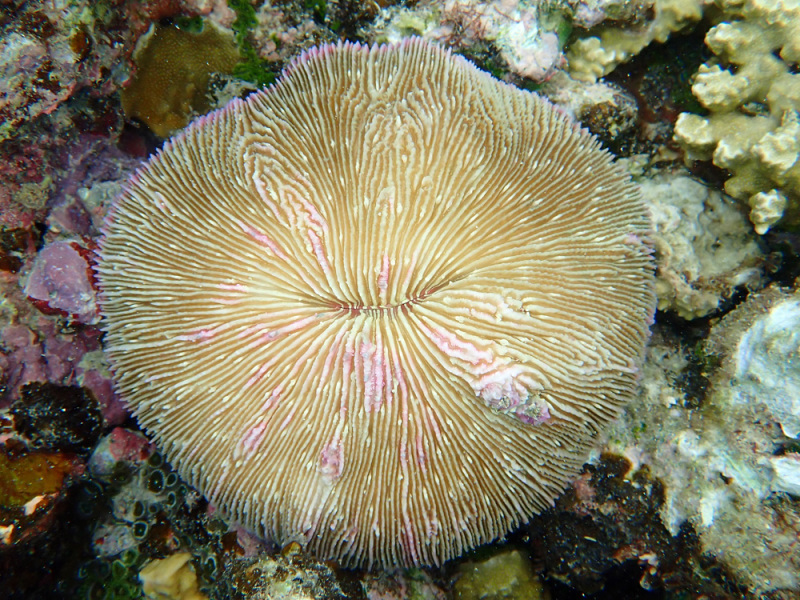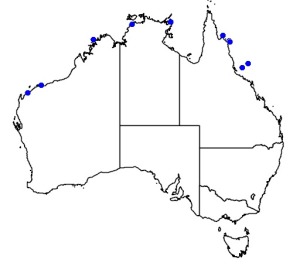Colours
Distinguishing features
A fungid coral that forms a round skeleton up to 30 cm diameter. Septal teeth are fine but visible. Colour is typically brown. Tentacles are often partially extended during the day. (Contributed by Andy Lewis)
Uneven circular polyp with a slightly exsert mouth, small teeth, pretty straight septa, tentacular lobes. Often with purple rim. (Contributed by Zoe Richards)
Size
- Up to 30 cm (Diameter according to Veron, 2000.)
Synonyms
Similar taxa
- Animalia: species: Fungia fungites
-
Animalia:
species: Lithophyllon scabra
has smaller teeth and hence smoother septa. (Contributed by Dr Zoe Richards)
Distribution
Distribution and habitat preferences
Reef fronts, lagoons.
Can be found in most habitats around Lizard Island.
Behaviour
Lithophyllon repanda is a gonochoric broadcast spawner, however it can also reproduce asexually via budding of new individuals from the parent polyp. In Japanese populations from Okinawa, the species was shown to be protandrous. Research has been conducted into the UV absorbing compounds present in the mucus of this species, which appear to allow it to inhabit both deep and very shallow waters without damage. (Contributed by Dr Andy Lewis)
Web resources
References
- Baird, A.H. (2001). The ecology of coral larvae: settlement patterns, habitat selection and the length of the larval phase, Ph.D. thesis, James Cook University. LIRS catalog number 716.
- Baird, A.H., R.C. Babcock and C.P. Mundy (2003). Habitat selection by larvae influences the depth distribution of six common coral species. Marine Ecology Progress Series, 252: 289-293.
- Baird, A.H., J.R. Guest and B.L. Willis (2009). Systematic and biogeographical patterns in the reproductive biology of scleractinian corals, Annual Review of Ecology, Evolution and Systematics, 40: 551-571.
- View all references








